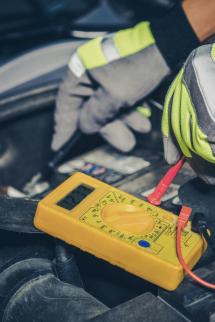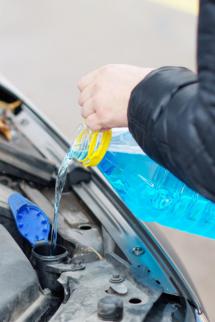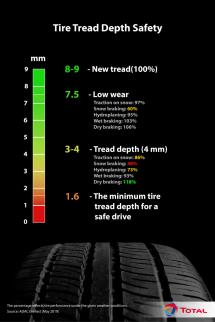Winter is just around the corner. As for many car owners, that also means the challenges and fear of winter car ownership are just around the corner, too. Number of breakdowns are likely to happen throughout the season.
However, many people are aware of the safety rules for driving in unpredictable weather, such as driving at slow speed, turning on lights, and keeping safe while driving in heavy rain. But they miss on knowing the essentials of their vehicle needs during the season.
There is no keeping away from driving under certain climate conditions, and it is important to protect your car during this harsh weather to avoid unexpected damages.
Just a few minutes of maintenance and check could help your vehicle through the worst the weather could offer.
And for that, we have gathered a list of the top 8 car care tips to get it ready and maintain its condition during this season.
- Check your Car Engine Oil
- Check your Car’s Battery Life
- Check your Vehicle Radiator
- Check the Windshield Washer Fluid
- Check the Windshield Wipers
- Check your Car Tires
- Check for any Exterior Corrosions
- Check your Emergency Kit
1. Check your Car Engine Oil:
With temperature changes during this season, your car’s engine oil takes on greater importance than you might think!
In order for your car to perform well throughout the colder time of the year, you will need to check your engine oil level to guarantee that the level isn't too low and that has the best possible consistency as well.
Also, selecting an engine oil that's too thin will not provide sufficient protection for your engine, as going with an oil that's too thick will challenge your engine to start fast in cold weather.
So, always remember to check your vehicle owner's manual to make sure of using the recommended oil type, grade, & viscosity accordingly.
2. Check Your Car’s Battery Life:

Winter puts more pressure on your battery, especially if you leave your vehicle outside.
The risk of battery failure is greater in rainy, freezing, cold, and icy weather, since cold and rainy weather can leave a stress on your car’s battery, as humidity can cause corrosion and drain it overnight.
Normally, your car battery lifespan would decrease 1 to 2 years during the rainy season, and it would decrease 1 to 3 years during the cold season.
So, stay away from the annoying feeling of hearing nothing when you start your car by a usual check of battery and charging system. Workshops don't charge you much to test your battery, as some auto-parts stores will do it for free.
3. Check your Vehicle Radiator:
Along with unpredictable weather & road conditions, cold weather can cause some major problems for your car’s radiator, in particular.
Cold weather can cause your radiator to contract, which will put a strain on your hose clamps, an essential component that prevents the engine from overheating, reduce friction, and ensure that the coolant can enter and leave the radiator without any coolant leaks.
Because of that, if your radiator isn't filled to the correct level with the ideal antifreeze & coolant, the fluid would freeze, which would cause a leak or even make the transmission to fail.
Remember, checking the radiator and antifreeze early or taking your vehicle for the winter check can save you from all of this headache.
4. Check the Windshield Washer Fluid
Have you been adding pure water in the windshield washer fluid tank? Possibly a bit? No matter if you think pure water is good for the environment or you're just trying to save some bucks, this is a bad idea!
Seems like it could be an odd issue, but regardless of the freezing or harsh weather conditions in the area you live in, it's not that odd.
Extreme weather temperatures, pure water or even regular washer fluid may freeze on your windshield, and it might even freeze and clog the washer hoses, which would lead into the obstructed vision while driving.
That's why it is always recommended to use the right washer fluid formula, a formula that has a proper mixture of chemicals, such as antifreeze, wiper fluid, additives, and so on.
Always give yourself a protected edge, check the washer fluid level, and fill it up with the right fluid. There are not many things more annoying, or even risky, than having your windshield totally frosted, being extremely foggy with unclear vision, or even getting the messy road debris while driving.

5. Check the Windshield Wipers
Good visibility is essential for safe driving, since approximately 20% of road accidents are caused by poor visibility! That’s why windshield wipers, along with other essential elements are vital for your driving safety.
Harsh weather conditions can stiffen and damage your windshield wiper blades, making them more brittle.
Utilizing the right wipers that performs ideally are essential to have the best driving visibility, as they work hard to keep your windscreen free of any annoyance and dirbs during a rainy, snowy, or even hazy day.
Even with top care, it’s possible that your wipers will become ripped, torn, and even split. On a regular basis, always check your wipers physically, take a look and see, are there any gaps or worn bits along the wiper blades? Or is there any rust or damage?
Visibility is essential for your safety, your passengers, and other drivers! Don’t compromise and ensure your windshield wipers are always in its best condition.
6. Check your Car Tires

Good car tires are the key for an essential steering and braking system; a healthy driving system for your vehicle.
Unfortunately, it is one of the most underestimated components, especially its tread. Most of the road accidents during the harsh weather conditions are caused because the car could not stop quickly because the treads were extremely dull or completely worn down.
New tires have a tread that is 8 to 9 millimeters in depth. As you start driving, it will start to wear out.
Normally, it is recommended to have a tire change if the tread has reached a 1.6 millimeters of depth. However, during the harsh winter conditions, it is extremely recommended to get your car tires changed if the tread has reached a 3 millimeters of depth. [source]
For your own safety and peace of mind, before hitting the road, make sure to check that your tires have good enough tread that can take on any type of weather condition you might get. Your car might already come with a tread-wear indicator that will notify you when it’s recommended to get new ones.
To check, simply stick a coin into the tread to see how deep they are. If you can still see the coin's golden circle, then it is best that you get a new set of tires before your next drive.
7. Check for any Exterior Corrosions
Obviously, the exterior of your car takes on the harsh season the most with dirt, debris, rainfall , snowfall, and so forth upon it. Probably by now you are wondering; why is it one of the recommended points to keep an eye for during this season? What is the use of cleaning the car when it’s going to get dirty again? Well, there is a point.
As your car goes through this muddy harsh weather and stays on for a couple of nights, the easy cleaning spots will become harder to clean.
Just like your windshield, your car paint and exterior are at risk for the dirt spots. Avoiding those stubborn spots from build up on your vehicle would lower the chances of rust formulation!
Paint acts like a raincoat and protectant for your vehicle, and any exposed exterior is vulnerable to rust and other corrosion damage especially during those unpredictable weather conditions.
Rust is not fun to have, but it is easy to defeat! Have your car washed after facing those weather conditions, and remember to check for any scratches, dings or damages that might harm the paint. A simple check and clean could help save you big in future.
However, don’t forget the bottom half of the vehicle as well! Since it faces most of the road conditions, such as dirt, water, snow, and other contaminants, which may lead to corrosion that could be dangerous for your safety and the car as well!
Therefore, add a protective layer for the bottom half of your vehicle. Ask the professional to apply a coat of polish after the car has been thoroughly washed.
8. Check your Emergency Kit
We wanted to share one last piece of advice more than a car care tip here.
Throughout this season and throughout the unpredictable weather conditions, you might find yourself stuck on a deserted road, late at night, with almost very few on the road around you.
We hope this doesn't happen to you, however, if you do find yourself in a situation like this, you will be thankful you thought ahead and kept an emergency winter kit in your car.
Be prepared to navigate through this season, as it is always a good idea to keep a basic winter emergency kit in your car, especially if you are traveling far. It can include the following:
- Phone charger
- Towing cables
- Jumper cables
- Flashlight
- Raincoat and umbrella
- Blanket
- First aid kit
- Snacks, energy bars, & water
- Shovel & Ice scraper (for snowy conditions)
- Warning triangles
- Extra warm clothing



